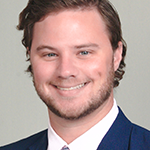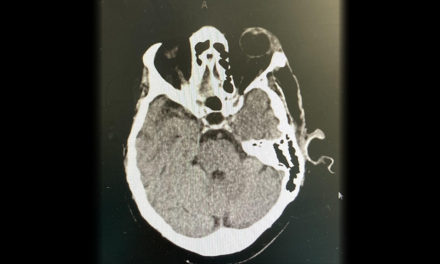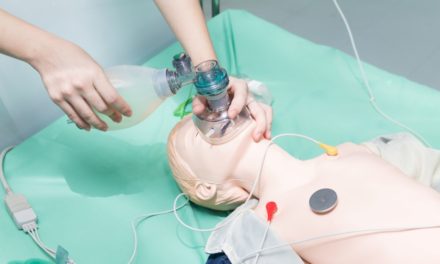From Scribing Notes to Saving Lives: The transition from scribing in the Emergency Department to medical school and beyond
Receiving your acceptance letter to medical school is one of the most exciting and joyous moments in an aspiring physician’s life, but the path taken to receive the letter can be daunting to say the least. One of the biggest contributors to this ever-growing ball of stress and anxiety is finding extracurricular involvement and medical experience that you believe will make you a standout applicant. Is there one experience that is better than the rest? I’m sure this could be answered differently by every healthcare worker you encounter, but I personally know that scribing in the emergency department (ED) not only helped guide me toward a career in emergency medicine, but also gave me the type of exposure and experience needed to be a great medical student.
So what exactly is a scribe and what do they do? As a scribe, you are fortunate enough to accompany the resident, attending or other healthcare provider in every patient encounter as they obtain a history, perform a physical exam and discuss their assessment and plan with the patient. Scribes get to see everything from the sniffles all the way up to Level 1 trauma alerts. They are responsible for writing all the health information collected in the electronic medical record (EMR) in an organized, fluent and detailed manner. This alone is a wonderful learning opportunity, but it gets better. After the initial patient encounter, scribes watch the resident or healthcare provider present the patient to the attending as they discuss the differential diagnosis and workup. If there are residents present, this is likely a teaching hospital, in which there will be educational points made within the discussion. Altogether, scribes get to see a patient encounter from start to finish, all while picking up key skills that they will use throughout medical school, residency and their careers in medicine.
Over my two years of scribing in the ED at UF Health Gainesville, I gained a tremendous amount of knowledge that I did not fully appreciate until medical school. During my first two years of medical school, I was able to answer countless exam questions solely using my prior scribe experience. Learning how to perform a patient exam and write a SOAP note came much easier to me because I had done it so many times before. Not to mention, I also had multiple questions on the USMLE Step 1 exam that I would not have known if not for scribing. Throughout my first year of rotations as a medical student, I noticed that presenting a patient, proposing differential diagnoses, and formulating an assessment and plan came more naturally. The knowledge and skills I had gained from watching thousands of patient encounters and resident presentations as a scribe gave me the confidence to see more patients and get more involved during clinical rotations. Even three years later, I still remembered what scribing had taught me; it’s the gift that keeps on giving.
I knew I couldn’t be the only prior scribe to notice how the job has impacted my medical school career, and I wasn’t wrong. One of my personal mentors, current 4th-year medical student and future EM resident physician at UF Health Jacksonville, Alexa Peterson, had this to say about her scribing experience: “Looking back, if I had to pick, being a scribe prior to medical school was the single most beneficial thing I did to prepare myself for this path. It was what propelled me into the field of emergency medicine. First, it taught me time management and prioritization, both of which we know are critical for surviving medical school. I was in class and on campus from 8:00 am to 4:00 pm every day followed by multiple shifts of 5:00 pm to 1:00 am for scribing throughout the week/weekend. This made for some extremely long days and extremely early turnarounds. However, for as extreme and hectic as it seemed some weeks, I wouldn’t have changed it for the world. This is because, more importantly, scribing provided me with the best mentors. I came out of that experience thinking, ‘I want to be one of those docs.’ The physicians I was working with offered guidance on why I should pursue medicine and the admission process, provided teaching points on difficult patients, and were always motivating. These aspects were extremely important because nobody in my family is a physician and I was lacking mentorship at home. Yes, emergency medicine is fast-paced shift-work, with endless variety that can make the specialty appealing on the surface, but for me, it was the people I met in that department that made me feel part of the team and made me feel welcomed in the specialty.”
Not only does the knowledge and experience gained from scribing help you throughout your pre-clinical and clerkship years of medical school, but it will follow you all the way to residency. Annabeth Johnson, DO, PGY-1 at Morristown Medical Center told me: “The skills I acquired through my time as a scribe helped prepare me for many of the challenges I encountered not only in medical school, but also in my first year of residency. I gained exposure to medical terminology, learned how to properly document and became familiar with formulating a differential diagnosis. Working alongside physicians trained me to think clinically and allowed me to see firsthand all the different hats physicians wear when it comes to patient care. These are skills that have served me well during my audition rotations and into residency as I work with patients from all walks of life.” This shows just how impactful being a scribe can be. Four years after scribing, Dr. Johnson is still implementing some of the skills and knowledge acquired from scribing as she cares for her patients every day.
Emergency physicians who have worked directly with scribes know the level of exposure they receive while in the ED writing notes and the immense amount of medical knowledge they pick up along the way. They even notice slight differences in students on audition rotations who have had prior scribe experience. Residency Ultrasound Director and Assistant Program Director of the Emergency Medicine Residency at North Florida Regional Medical Center, Diana Mora-Montera, MD, said in reference to her experience working with scribes and medical students with prior scribe experience: “I did my residency at a program with its own scribe program. I worked side by side with hopeful undergrads who had a better idea of what medicine really is than I did as a third- or fourth-year medical student. Later as a brand-new attending, I often discussed the differential diagnosis and work up of complicated case presentations with scribes, not only as a way of teaching but also as a sounding board. There is a drastic maturity level and clinical acumen that is obviously identifiable in medical students who have been scribes. I have noticed that many times during their presentations, medical students with scribe experience do not require as much coaxing to provide a plan and disposition. Don’t get me wrong—we also have fantastic students without prior scribing experience. However, it just seems to come more naturally for students who have scribed in the ED before. Intern year has a huge learning curve, and documentation is part of it. Residents with ED scribing experience have the documentation hurdle out of the way and can easily focus on the other billion things to learn.”
It goes without saying that if you are a pre-medical student looking for that one experience in medicine to give you an edge, then grab a laptop and head to the local ED because scribing is calling your name. Regardless of the level of education, expertise or perspective, those that have been a scribe or who have worked with scribes all agree that scribing in the ED prior to medical school is an unrivaled medical experience. To this day, I keep in contact with the physicians I scribed for and will cherish my memories as a scribe as they continue to make a tremendous impact on my path towards a career in emergency medicine.
This article is part of the following sections:







